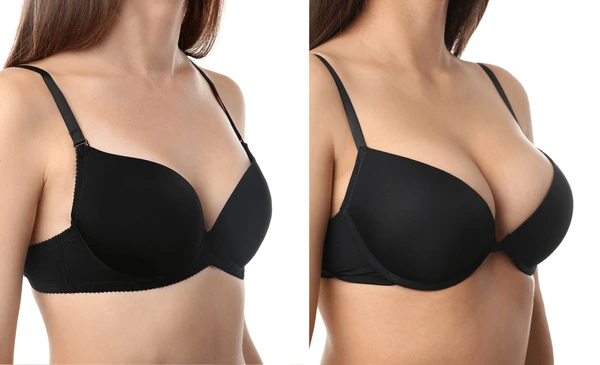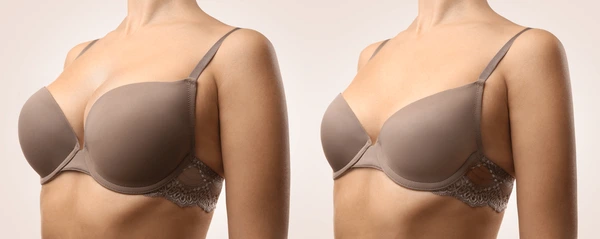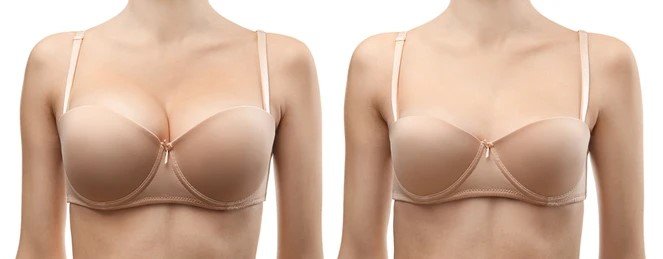Why is breast upliftment required?
Most people choose breast augmentation or upliftment to change the appearance, symmetry of the breasts, and the like. The surgery enhances the person on physical and psychological fronts. Physically the individual feels a sense of attractiveness, with the surgery. It is found that patients with smaller breasts report higher tendencies of anxiety and even depression. Psychologically with the breast revision, the individual feels a boost in self-image and confidence, with an appealing physicality proportionate with the body. Thus the primary benefit of this surgery is the new and improved appearance of the breasts, giving a fuller, appealing and higher chest. It also provides a solution to achieve symmetry in the breasts size of the patient. Some cases report healthier relationships with augmentation. It also helps one overcome self-esteem complexes as they feel happier and more content with the upliftment.
What is the procedure?
The procedure of the surgery includes making incisions on the underside of the breasts. Then the surgeon places an implant through the opening of the incision. An implant is a sac filled with sterile saline water. The incisions are made based on the individual anatomy of the breasts. In some cases, the implants may be placed through an incision underarm. This type of surgery could be performed using an endoscope. There is a visible scar that is found in these types of surgeries. While in many other cases a cut around the edge of the areola, i.e., the region around the nipple, is made and an implant is placed through this incision. Also, the implant can be placed near the belly button and can be moved up to the chest using an endoscope. The breast implant revision is performed either for medical or cosmetic reasons under general anesthesia. Some precautions are taken care of before breast revision surgery. The patient may have to provide a detailed medical history to avoid any possibility of risks of complications. Also to reconsider if one wishes to choose implants or just fat transfer. The surgeon advises a pattern of habits to be adopted before the surgery to decrease the risks of any complications related to the tissues or region near the areola. It is also very important to check if the health care centre is a registered centre. The incisions are stitched and the breasts are wrapped with gauze bandages and may be given a surgical bra post-surgery. It is important to follow up with all the appointments scheduled to post the surgery. Drainage tubes are inserted to drain away any excess fluid. Precautions should be taken so that the tubes and bandages are removed as per the instructions of the surgeon. The surgeon will remove the stitches in about a week and the patient must avoid circumstances of lifting heavy weights until four weeks post the surgery.
What can be the risks involved and how to deal with them?
The surgery does have risks of certain complications and the patient may find some side effects from the breast revision. Side effects like soreness and increased sensitivity in the nipple region, bleeding, bruising and swelling will be visible for some days. Sometimes the immediate side effects include infection, wound healing issues and even hematoma. Some of the common complications of the surgery that can occur over time include:
- Formation of Scar tissues.
- The implants can cause the breasts to droop over some time.
- Symmastia occurs as the implants may have tended towards the middle of the chest.
- Fluid deposition around the implant is also termed seroma
- Deflation of the implants.
- When the texture of the implants is rough it is observed that the patient faces a rare immune system cancer called Breast implant-associated anaplastic large cell lymphoma (BIA-ALCL).
The patient can go back home immediately, but they will have to avoid driving back or indulging in any activities for 3-4 days. They should consider absolute rest and visit the surgeon based on their advice, i.e. medication, ointment, bandages and cleaning or even wearing loose tees. If the patient observes any symptoms of fever, abnormal discharge near the incision region, any rupture in the stitches or any abnormal enlargement or firmness in either or both breasts, it is recommended to visit the surgeon or health care immediately.
How long does the surgery last?
Due to ageing, the breasts may tend to sag or change shape. Breast revision through implants have a lifetime warranty and so many women prefer replacing breast implants every 10-year time. Nevertheless, the average number of implants lasts 10-20 years, and are either removed or replaced after 20 years. Most often after 20 years or so, the patient may observe hardening or tightening of the breasts or capsular contracture, implant rupture, change in position etc., and some choose to replace the implants while others get them removed. Either way, it is important to consult with the surgeon/ health care Breast revision is a procedural treatment and costs over 1 to 3 lakhs, so it is important to make a wise choice before deciding on surgery.
Contact Us
Have questions? Get in touch!
Phone
Address
H-2A, Green Park Ext Rd, Near Green Park Gurudwara, Block H, Green Park Extension, New Delhi 110016





